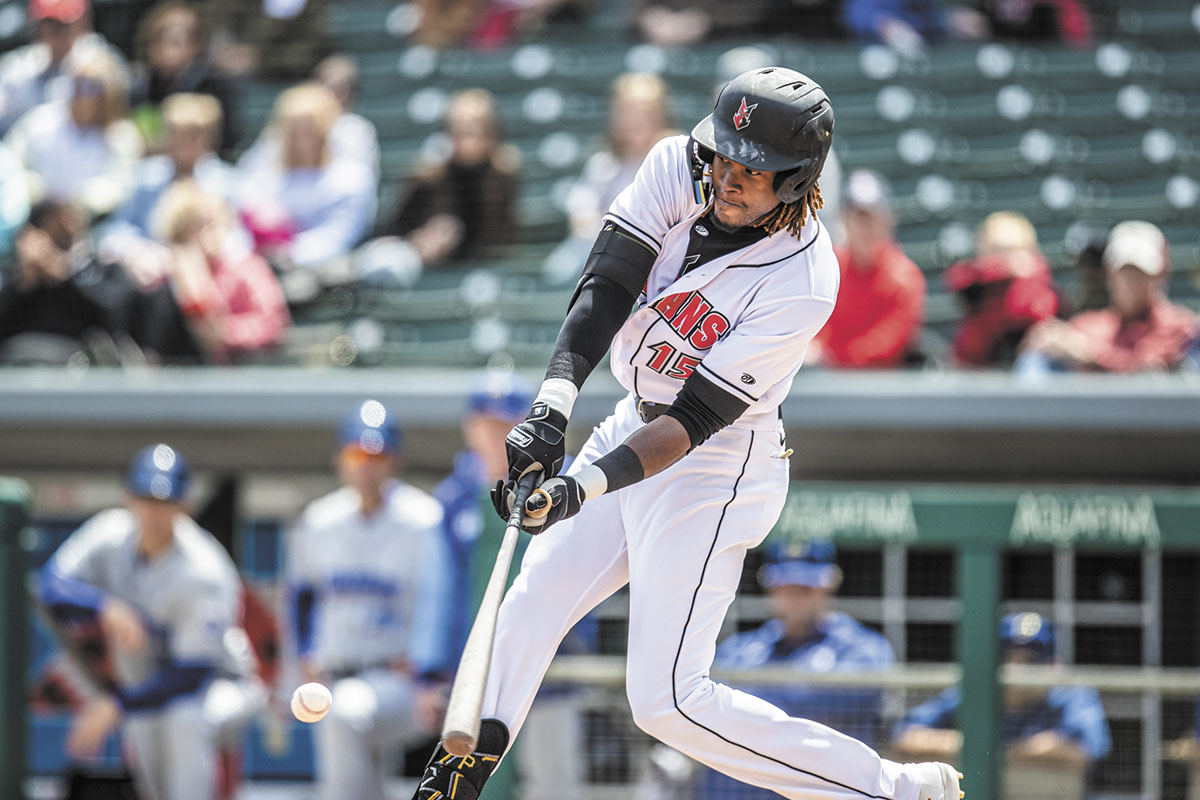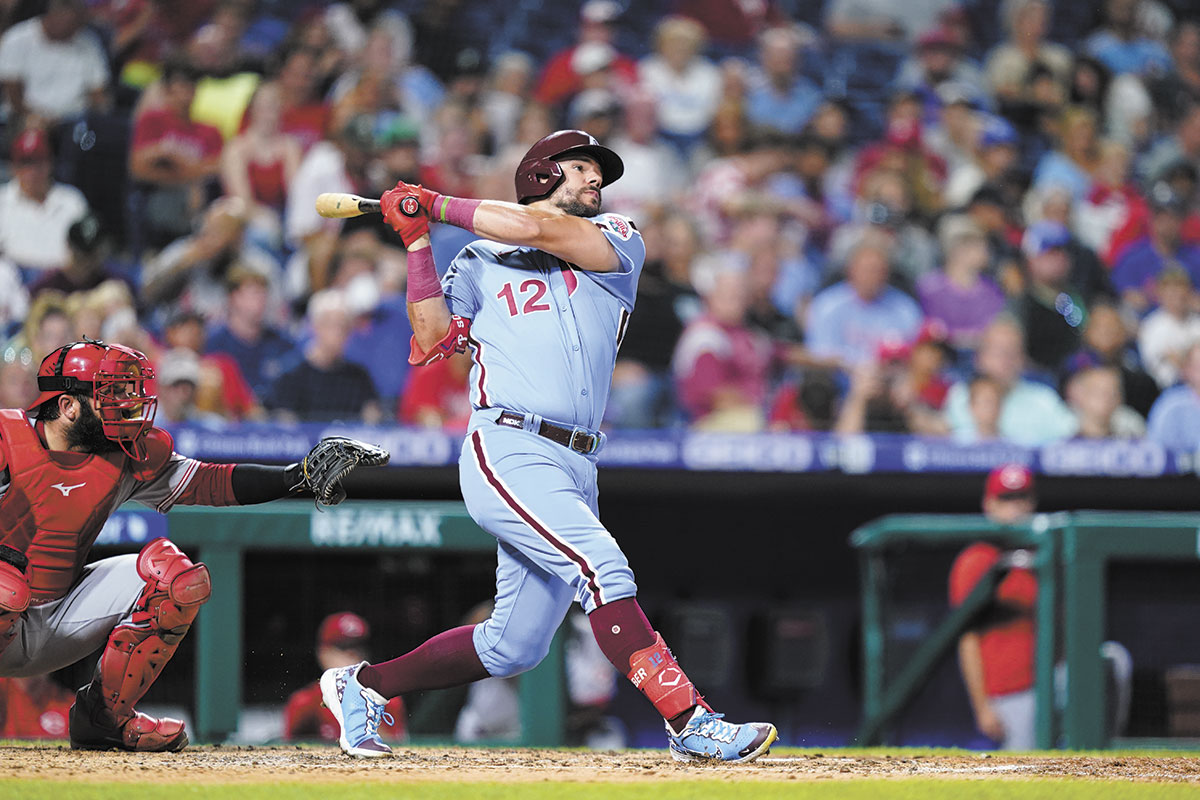Subscriber Benefit
As a subscriber you can listen to articles at work, in the car, or while you work out. Subscribe Now
Three things you’re always sure to see at a professional baseball game: beer, hot dogs and oddball statistics that tell you what has happened, what might happen, or both. As the regular season careens toward the finish line—in Victory Field and elsewhere—we highlight some eccentric numerical feats of summer.
Start locally with the Indians? Sure.
They came into the last home stand of the season this week leading the International League in triples—but were tied for 17th in home runs.
They had the longest errorless streak of all 120 teams in minor league baseball at 12 games—but were 27th out of 30 Triple-A teams in season fielding percentage.
Mason Martin had already shattered the franchise season record by striking out 174 times, nearly 30 more than the old mark. But when he wasn’t whiffing, he was hammering—with 17 home runs and 71 RBIs, and the chance to drive in the most runs for the Indians in 12 years.
The Indians were sputtering along at 41-47 in late July—but then went 29-17, tied for the most victories since July 23 in all of Triple-A baseball.
They had won 14 games on their last at-bat, eight by walk-off runs. With impeccable timing, one of those came on July 4 before the biggest crowd of the season. Another came on a steal of home.
They had outscored opponents by 58 runs in the first two innings—but been outscored the rest of the game by 31.
With worries rampant in the major leagues about the glacial pace of play, they had spent a season with the pitch clock rule and finished a nine-inning game in an hour and 53 minutes. Eleven major league games last Sunday went more than three hours.
The Indians won one game with a no-hitter. They won another by scoring 19 runs.
They had used 24 different pitchers to start a game and had gotten only nine quality starts—three or fewer earned runs in six innings—and 18 victories from the bunch. Trouble? Not necessarily. They were in the top seven in the league in ERA. In modern baseball with its pitch count obsession, quick hooks of starting pitchers are almost as common a sight on the mound as the rosin bag.
Oneil Cruz—at 6-foot, 7-inches one of the tallest shortstops in history—had spent the early season in Indianapolis making the velocity of the ball coming off his bat a fashionable number. He had one hit at Victory Field that went outbound at 117.25 mph. Then he was called up to Pittsburgh and reached 122.4 mph on a single, the highest speed recorded since they started measuring such things seven years ago. He also sent a home run out of the Pirates’ PNC Park and into the Allegheny River.
The Indians started the final home stand fifth in average attendance in the International League. They’ve finished in the top five every non-COVID season since 2012, so this was a splash of normalcy.
“The 2022 season has been a breath of fresh air for our organization as we’ve nearly made a full return to pre-pandemic levels at Victory Field,” said Randy Lewandowski, Indians president and general manager. “We appreciate the continued support from our fans, partners and central Indiana community as Indians baseball wraps up at the end of September.”
Major league roundup
Now for the big leagues. Lots of unconventional numbers there, with maybe more to come.
The sacrifice bunt, for example, has gone the way of cheap gas. The Atlanta Braves came into this past week with none for the entire season. The Los Angeles Dodgers had one.
Same for complete games by pitchers. Fifty years ago, Steve Carlton had 30 by himself for Philadelphia. As of this week, the entire major league had 28.
Just three years ago, the Washington Nationals won the World Series. They began the past week with the worst record in baseball.
Lots of Chicago Cubs fans around here. And Cincinnati Reds fans. And Pirates fans, since they’re the Indians’ parent club. At the close of business on Monday, those three teams were a combined 86 games under .500 and 80.5 games out of first place. The Reds, you might recall, started 3-22.
The second-leading home-run hitter in all of baseball was Indiana University’s own Kyle Schwarber for the Philadelphia Phillies. The second-leading hitter in striking out was also Kyle Schwarber. He had 49 singles—and 37 home runs.

By Monday, there had been only four triple plays all season. The Minnesota Twins had two of them.
The Dodgers had outscored their opponents by 316 runs. That’s the most for any team in 21 years.
The Pirates had been outscored by 211.
The San Francisco Giants were 68-73. Only one year ago, they were on their way to 107 wins.
The Detroit Tigers had lost 87 games and never scored a single run in a quarter of them. The 21 shutouts matched the most for an American League team since the designated hitter was introduced 49 years ago.
Arizona pitcher Zac Gallen, who, before this season, had a career record of 13-24, had thrown 44-1/3 consecutive scoreless innings, the seventh-longest streak in history.
The Miami Marlins had lost 33 one-run games. The Cubs had lost 12 times in extra innings.
The Yankees had rolled to a 50-22 record in home games but were only 35-34 on the road. They had more wins in Yankee Stadium than the Nationals had everywhere.
Inter-league play was the model of balance. The National League was 37-37 as of this week. So was the American League. But the AL won the All-Star Game for the ninth consecutive time.
And there are rare things that still could happen.
The Seattle Mariners were sharing the top spot for a wild card. They could play in their first postseason since 2001.
Albert Pujols, who had hit only 23 home runs in the past three seasons combined, had found second wind in his final season in St. Louis, banging out 18 and climbing to 697 on the career list. He might reach 700 before he retires. The only three men who have done that are named Barry Bonds, Babe Ruth and Hank Aaron.
The Yankees’ Aaron Judge had 55 home runs. He could pass Roger Maris’ famous total of 61. The only guys to accomplish that are Bonds, Mark McGwire and Sammy Sosa. Judge would be the only one free of steroid taint.
The Atlanta Braves were contending for the National League East title and had one of the highest winning percentages in the sport the last half of the season. They could repeat as World Series champions. Nobody has done that in two decades, and only one National League team—the 1975-1976 Reds—has managed it in 100 years.
St. Louis first baseman Paul Goldschmidt was first in the NL in RBI, second in batting average and third in home runs. With one final push, he could win the Triple Crown. No National Leaguer has done that since 1937.
So, the numbers of baseball tell us a lot. Even if there are times we can’t understand what they’re saying.•
__________
Lopresti is a lifelong resident of Richmond and a graduate of Ball State University. He was a columnist for USA Today and Gannett newspapers for 31 years; he covered 34 Final Fours, 30 Super Bowls, 32 World Series and 16 Olympics. His column appears weekly. He can be reached at [email protected].
Please enable JavaScript to view this content.
